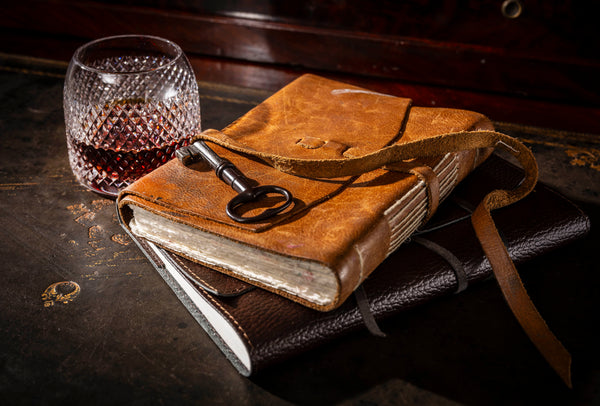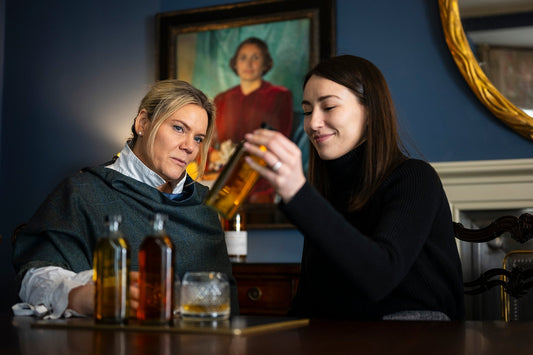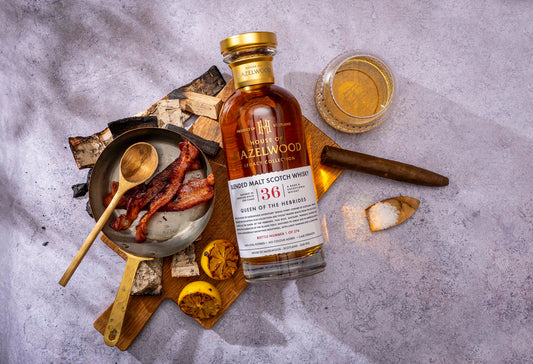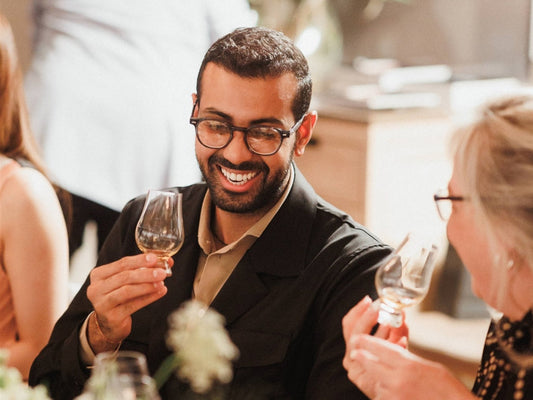When curating your own personal whisky collection, how do you find the perfect bottle? Guest writer, Joel Harrison, shares his experiences on the journey to finding your flavour.
Scotch whisky, like all great passions, is enriched by the world around it. Just as a chef draws inspiration from travel, art, and literature, the journey as a whisky connoisseur can be deepened by looking to other realms of interest. Whisky is formed not just by barley, copper stills, oak and time, but by its context within culture.
That first sip of a rare, old Scotch whisky isn’t just a taste. It’s a conversation with culture and a journey through the past, with a spirit distilled in a by-gone era which has slowly slumbered in cask while the world around it morphed, developed, shifted, progressed and moved.
That sip is to have communion with the fresh winds that sweep over Highland moors, or the salt air that curls through remote islands, and the time which has passed. These winds that have blown through the workshops of the great artists, and across the desks of those writing lauded literature, is the same wind that has wrapped around casks of maturing Scotch, enveloping them as they sleep and imbuing them with their experience.

That sip is to savour that voyage through time, place and culture. A journey which drives both flavour and personality into a cask of Scotch whisky, and like so much culture around it, it is a product of patience, experience and artistry. It is experience, manifest as flavour.
We are lucky in the world of Scotch whisky, for this journey of maturation allows casks to develop a kaleidoscope of aromas and flavours, a plethora for the nose and palate, from medicinal smoke, through to the lightest floral notes of a newly opened rose.
The assumption is always that older whisky is richer, deeper, more unctuous and toned. Yet take The Garden At Hazelwood expression from The House Of Hazelwood, a 47-Years-Old blended malt whisky that carries the lightness of lavender, the floral notes of jasmine and the sweetness of honey. All flavours developed over nearly five decades in cask, culminating a rare Scotch whisky that is as light as silk.

Much like art or literature, you don’t merely drink whisky; you engage with it, understand its complexities, and, most importantly, find the expression that speaks to your palate, your story. To understand the ‘why’ and the ‘wherefore’ in each bottle of Scotch whisky, is to unlock even more complex layers in its story and flavour. Ask questions of your whisky, and it will answer back.

Finding your whisky flavour isn’t just about tasting, either. It’s about discovery.
Approach it like an artist approaches a blank canvas or a writer a fresh notebook. There’s no rush. This is a journey to be savoured, an exploration of regions, distilleries, and ageing processes that spans generations.
Start by tasting broadly. Don’t limit yourself to assumptions of the past, as each bottle is a new experience. Smoke, for example, is like jazz music. It comes in many forms. It can be a light backdrop to more prominent flavours, or it can be wild, untamed and unashamed. Raucous, if you will. Some like the former, the others the latter. A few will like both.
But don’t dismiss all jazz because you don’t like one style. Smoke in whisky is the same. It can offer a delicate bed for other flavours to build on, allowing floral notes and sweet tones to flourish. Or it can be the main player, with herbal, medicinal and rich cigar notes at the fore. Both smoke, yet both manifestly different. Pour a dram of the 36-Years-Old Queen of the Hebrides release from House of Hazelwood, and you’ll find a complex journey of smoke that dazzles like Dizzy Gillespie; not so much Scotch whisky, as a serious groove.

Value is not just about the price tag—it’s about the story, the history, the legacy distilled into every bottle. When you purchase a whisky with age and experience, you’re investing into its narrative, and the same is true with art.
You can see a painting on a postcard or a poster, but when you see it in real life, and read the history of the artist and the art itself, something stirs within you.
Because art is more than paint on canvas, or chisel on stone. It is the expression of the artist themselves. For the distiller, barley and copper are their materials, oak casks their canvas. Whisky is more than just a spirit matured in barrel. It is the expression of the distiller, and the distillery. It is their art, and rare, old whisky their masterpieces.
Much like art, finding your flavour in whisky is about trusting your instincts. True value is internal. It could be an irreplaceable vintage painting composed by a family member, or an Old Master deemed impeccable; both can hold real value to the owner. The things that are most treasured, are the most valuable. The stocks at House of Hazelwood are truly valued by the Gordon family, a private stock made available for their extreme quality, high age and as examples of what great looks like. This is true value.

With all this in mind, when choosing a Scotch whisky, you must listen to your inner voice. When you taste a whisky that makes you pause, that makes the room around you fade away for a moment, you’ve found something worth holding onto. That bottle might not be the most famous, or the most expensive, but if it speaks to you, if it feels like it was crafted just for you, then it’s priceless.
Finally, remember that finding your perfect whisky is a journey, not a destination. It’s a process that requires time, patience, and a willingness to explore. Don’t rush it. Don’t be swayed by trends or the opinions of others. Your taste is your own, and the whisky that’s right for you is just that: the one that is right for you. The joy is in the search, in the tasting, in the slow, deliberate uncovering of what moves you.
And when you find that perfect bottle, that perfect flavour that feels like it was crafted just for you—well, that’s when you’ll know you’ve found more than just a whisky. You’ve found a piece of yourself.




